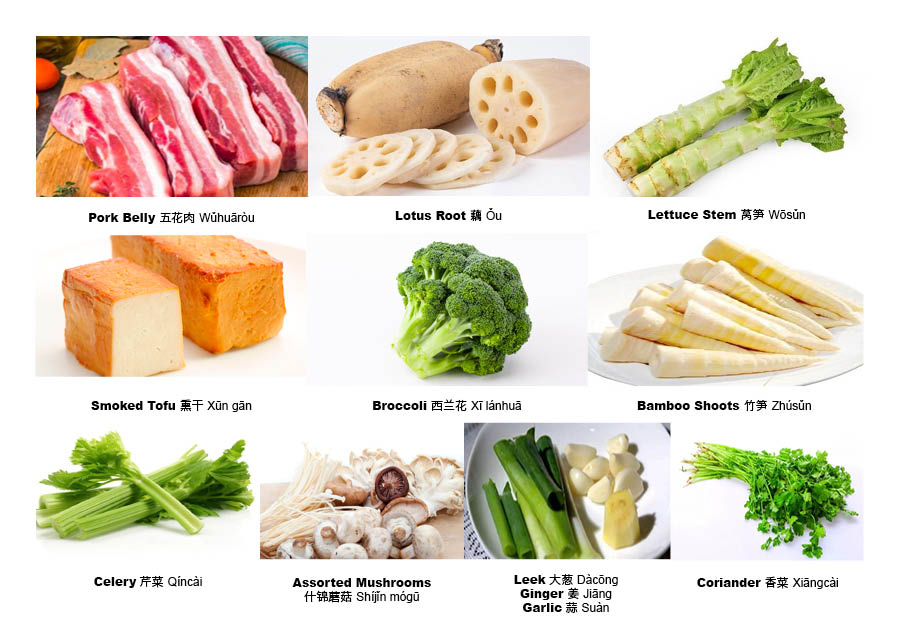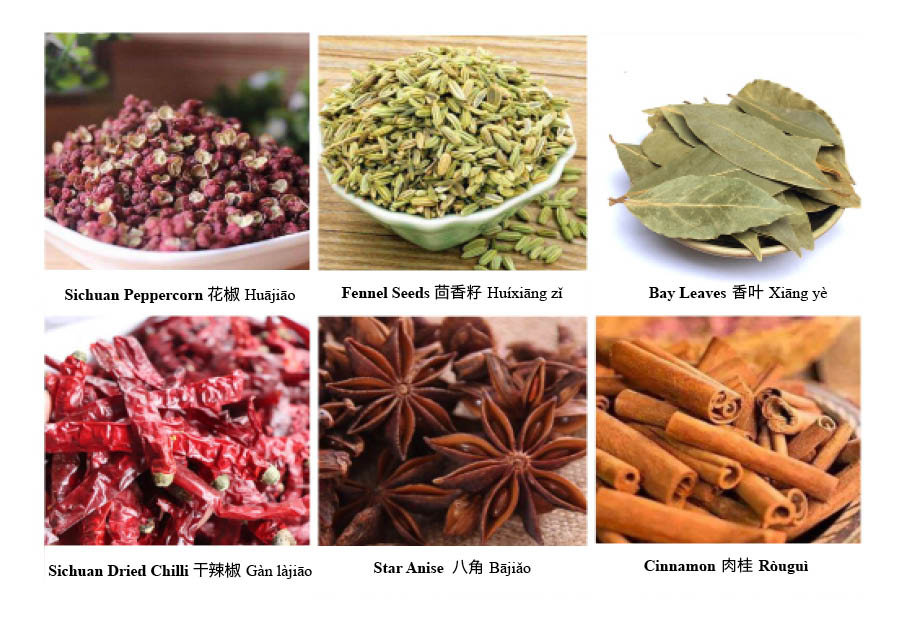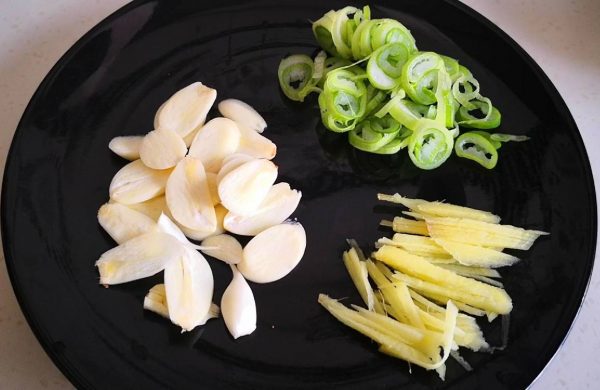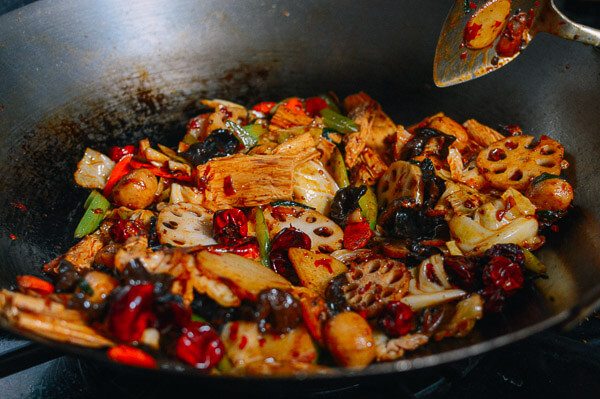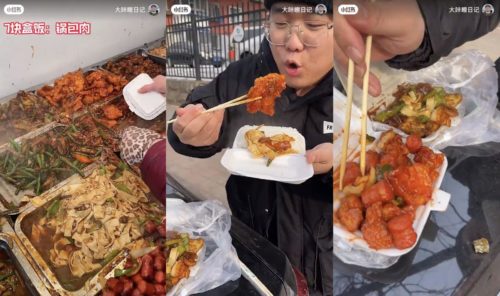Chinese homestyle recipe: Fragrant spicy pot
Originally a creation of the Tujia minority, mala xiang guo is one of the most popular home dishes in the Chongqing area. It is not only famous for its many combined flavors (numbing, spicy, salty, sweet, and fragrant), but also for its varied choice of ingredients: chicken, pork, fish, potatoes, lotus root, mushrooms, tofu, cabbage, you name it!
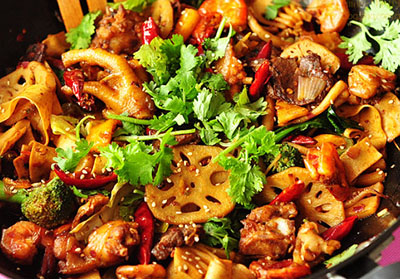
This weekly food column is done in collaboration with the Beijing-based project and event company The Hutong, which is currently running a cook-at-home competition called Quarantine Cook-Off.

Fragrant Spicy Pot 麻辣香锅 málà xiāng guō
Sichuan cuisine is one of the “four major cuisines” in China, as well as one of the “eight regional cuisines” in Chinese culinary tradition. The city of Chengdu has been chosen by UNESCO as a “City of Gastronomy” in large part because of its illustrious culinary heritage.
The dishes from Chengdu, Zigong (in the south of Sichuan), and Chongqing define the Sichuan cooking style, which is famous for its spices: the well-known Sichuan pepper creates a tingly numbness in the mouth, despite it not being as hot as the chili pepper, and has a citrus aroma. Star anise comes from an evergreen tree in southwest China. The widely-used chili pepper came to Sichuan from Latin America through the spice trade in the 18th century, and the fennel seeds came from the Mediterranean.
Originally a creation of the Tujia minority, mala xiang guo is one of the most popular home dishes in the Chongqing area. It is not only famous for its many combined flavors (numbing, spicy, salty, sweet, and fragrant), but also for its varied choice of ingredients: chicken, pork, fish, potatoes, lotus root, mushrooms, tofu, cabbage, you name it! In fact, you can pretty much cook this dish with whatever is in your fridge.
As it is a home-cooked dish, people have the flexibility to adjust its spiciness and “numbing-ness.” It can be a meat dish, a vegetarian dish, and even a vegan dish. In addition, sometimes families and restaurants add different herbs and spices according to traditional Chinese medicine. Carefully selected, these extra herbs are added for their health benefits and are varied based on the season.
Let’s see how to cook this dish with pork.
Notes:
1. For those who don’t eat pork, you can use beef, chicken, or seafood instead. For the vegetarian and vegan version, simply cook the dish without animal products, or substitute the pork with extra mushrooms, other vegetables, or tofu.)
2. If you can’t find Sichuan chili bean paste, feel free to substitute with any spicy sauce.
Ingredients:
(Serves 4)
- 200g pork belly
- 100g lotus root
- 100g lettuce stem
- 1 small block of the smoked tofu
- 200g broccoli
- 100g bamboo shoots
- 100g celery
- 200g assorted mushrooms
- 50g leek
- 10 cloves of garlic
- 15g ginger
- 1-2 stalks of coriander
- 3 tbsp of Sichuan Pixian chili bean paste (郫县豆瓣酱 Píxiàn dòubàn jiàng)
- 1 tbsp of oyster sauce
- 2 tbsp of light soy sauce
- 2 tsp of sugar or sugar for taste
- 1 tsp of salt or salt for taste
- 100mL vegetable oil
- 1-2 tsp of sesame oil
Spices:
- 1 tbsp of Sichuan peppercorn (or according to taste)
- 80g of dried chili peppers, or according to taste 1 tsp of fennel seeds
- 1 tsp of fennel seeds
- 3 pieces of star anise
- 2 bay leaves
- 1 piece of cinnamon
Instructions:
Thinly slice the pork belly; cut all the vegetables: lotus root, stem lettuce, bamboo shoots, celery, mushrooms, and tofu, and cut the broccoli into bite-size pieces. Cut garlic, ginger, and leek into big pieces and roughly chop the coriander.
Bring a pot of water to a boil with salt. Blanch the lotus root, stem lettuce, and broccoli for two minutes. Remove and dip into cold water, then drain for later use.
Heat 100mL oil in the wok and add bay leaves, star anise, fennel seeds, cinnamon bark, dried chili pepper, and Sichuan peppercorn.
Stir-fry until fragrant.
Add the Pixian Doubanjiang paste and the sliced pork. Stir-fry until the meat turns brown and releases fat.
Add garlic and ginger and stir-fry until fragrant.
Add the mushrooms. Fry about two minutes until the mushroom juice is released and starts evaporating.
Add the lotus root, stem lettuce, broccoli, celery, bamboo shoots, and tofu. Stir-fry for another 2-3 minutes.
Season with cooking wine, soy sauce, oyster sauce, sugar, and salt according to taste, and mix in the leek.
Top it off with some sesame oil and some fresh coriander on top. Enjoy with rice!
Follow The Hutong on WeChat:

